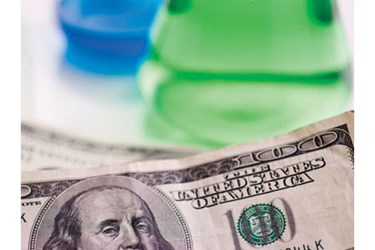Despite Government Incentives, Canadian Drug Makers' R&D Spending Drops

In 1987, the Canadian government cut a deal with Canadian brand name drug makers which allowed extended patent protection in return for 10 percent revenues directed towards research and development (R&D). Seventeen years later, as the patent protection is set to be extended once again, the Wall Street Journal (WSJ) blog has reported that the plan is ineffective, but experts disagree over where to place the blame.
The WSJ cites a recent report from the Patented Medicine Prices Review Board (PMPRB), a Canadian government agency which oversees and regulates brand-name drugs and establishes the maximum price for which a patented drug may be sold.
According to the PMPRB report, R&D spending in Canada dropped to 5.4 percent amongst domestic drug makers, continuing its trend of decline since the patent incentives were first implemented. While drug makers met the mark in the years following the launch of the plan, the PMPRB claims that none have made the 10 percent mark in over a decade.
WSJ notes that the original deal failed to institute any kind of penalty if the companies failed to meet their mark, but some see this as a failure on the part of Canadian drug makers to deliver on a promise.
Michael Geist, an expert in intellectual property law at the University of Ottawa, spoke to The National Post and condemned the patent incentives, likening it to a “cash grab.” He continued: “It’s striking how the industry has for years failed to meet its commitment…The one thing [the patent incentive] doesn’t do is lead to any serious commitment to conduct new research in Canada.”
Industry experts hold a different view. Russell Williams, president of Canada’s Research-based Pharmaceutical Companies (Rx&D), claims that the numbers generated by the PMPRB are based on an outdated formula which misrepresents R&D spending. According to Williams, the $642 million estimation should be astronomically higher — closer to $1 billion — and cites an Rx&D report to back his claims.
Williams goes on to blame the Canadian government for making Canada an unattractive place to do pharma business. He told the National Post, “Canada is not globally competitive when it comes to its intellectual property regime and its regulatory system.”
In comparison to the PMPRB’s projected 5.4 percent spending in Canada, countries which are leaders in pharma development — Switzerland, U.S., U.K., Sweden, Italy, Germany, and France — spend upwards of 22 percent, on average.
In comparison, Canada only contributes 2 percent to the world market. According to Richard Gold, intellectual property law at McGill University, the patent protection was never likely to play a big part in Canada’s commitment to research.
Gold disagrees with Williams’ charges that Canada’s not doing enough to be competitive. He tells the WSJ, “Pharma is pulling out of Canada not because of the Canadian environment, but because of consolidation of the industry.”
Furthermore, Gold told the National Post, extending brand name patents might actually inhibit Canadian R&D. Smaller companies depend on revenue generated by generic drugs to fund research.
In summation, Gold had this to say about the extended patent protection. “It doesn’t work.”
